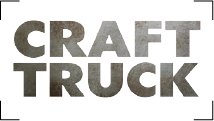Does the indie film distribution business confuse you?
You are not alone.
If you’re like me, you look at the world of indie films, and you look at all the platforms, the changing landscape of the biz, and you are left scratching your head.
I was just speaking with a distributor of indie films, and well (I won’t sugar coat this), it’s not pretty. The state of the industry is in major flux right now. That’s not to say there isn’t a model that works – there is, and we’ll get to that – but it does mean that things are getting more complicated; and that’s at the same time that more buyers are entering the market place.
So, what’s working? What’s not? And what can you do to help increase your returns. But first…
HOW DID WE GET HERE?
We know this story pretty well by now. But lets do a recap shall we… Back in the 1980’s… no, just kidding… but seriously…
PEOPLE went to theatres, and then…
YOU bought a lot of DVD’s, and then the…
INTERNET came and the…
DVD business went to crap (and distributors started to get scared, again), and then…
NETFLIX happened, and then…
SVOD’s started to flood the market place, a battle between the Networks that want to keep subscribers in their camp, and the new entrants like AMAZON, HULU, GOOGLE even… what’s a filmmaker to do?
So that’s how we got here. NOW WHAT?
1. PREDICTIVE MODELS AREN’T WORKING
Well, here’s the thing. We’re in an environment where the “old” model is becoming obsolete. Stay with me here… I know that sounds redundant.
Old used to be a time period of ten years. And then, when we hit 2000, “old” became a five year chunk of time, that’s my best guess anyway. And now, I’d say we’re year-by-year.
Here’s where things are going off the rails.
In the “old” model distributors could use predictive modelling – how past performance would dictate future performance – to a certain degree. They could count, as much as anyone can count on anything on this business, that a film would do a quantifiable amount at the box office (within a margin of error, of course); and then that would translate into a DVD sell-through figures of $X, and then there was a pretty stable broadcast market that could be counted on.
But now…
Distributors can’t count on any of that. Why? Because after the theatrical release, assuming there even is one, where do you go. You can no longer count on the DVD business to pick up the slack. And then after that… what do you do? The broadcast market. Sure, that will help. But then you have this whole SVOD problem. Netflix is fast becoming the place where distributors have to count on that revenue (or else). But Netflix only stocks so much product. Why? Because Netflix considers themselves to be like a network, a curator of content.
In other words, they have limited shelf space. And there’s a LOT of demand for it. So, while distributors want desperately to put Netflix into their predictive models, they can’t necessarily rely on it.
All of the above makes pricing movies very very difficult. Because its become ever more impossible to determine the price a distributor should pay for a movie.
2. MAYBE IT’S BROKE, BUT THE MARKET IS EXPANDING
The good news in this story is that there are an ever increasing amount of entrants into the market place. It’s easy to point a finger at Netflix and say, “bad Netflix, bad Netflix…”, but that’s not really the whole picture. With places like Amazon and Hulu really beginning to pick up the slack, and new distributors on the block, there is an appetite to get good product onto different platforms.
That doesn’t mean a distributors job is easier. It’s not. But it does mean that there are more and more different opportunities that are emerging in the SVOD and digital space, that create a larger open market for producers.
3. HOW TO PLAN, PLAN, PLAN
First, if you want to lose your money, the sure fire way to do it is to make a movie without understanding how it will eventually be monetized. That’s for starters. If you don’t have a plan going in, 95% you’ll lose you money.
So, you need a plan. Now, making that plan is way beyond the scope of the article, but here what you need to look at. You need to:
- speak to (more than one) sales rep, sales agent, and distributor,
- get a feel for the market,
- get real intelligible estimates from companies that you trust (do your homework…),
- speak to other producers that have worked with these companies — I’m going to say this again — speak to other producers); and
- start to build a real model for how much your film will be worth in the market place.
But what about my art?
What about it? This is the business of art. Yes, there are always, always, those amazing films that break out every year and get sold for millions of dollars. But there are hundreds, and hundreds of films that don’t get that opportunity.
4. CAST FEEDS THE BEAST
The widow maker is usually cast. Cast determines a lot in this market place. Cable companies and SVOD services almost blindly require some kind of known quantity in terms of cast to put your product on the shelf. Without that element, you will have a very real up-hill battle.
And, you’ll be counting on very prestigious industry ingratiation through festivals. Now, of course, this happens every year to a certain select group of titles. As the saying goes, “buyer beware”.
5. BUDGET FOR A MARGIN OF ERROR (and divide by 2)
If budget is a limitation, then again, have those conversations with people that you trust. Take a hard look at what you are trying to make, without compromising your vision for the project, and just understand what it will be worth in the market. And then take that number, and divide by two! Seriously, build a margin of error you can live with.
The point being, if you are going to go low budget, then make a great film for a low as you can go. Understand the risks.
6. WHAT YOUR FILM MEANS TO “THEM” IS…
… a product on the shelf. Now, and I want to be very clear here, because I desperately don’t want this to be misunderstand, I am not suggesting we all make action films with [insert action start of your choice here] for $500,000. What I am saying is that every film is, at the end of the day, is a product. Filmmaking and producing means being the business part of the “film business”. That’s the hard reality.
A distributors job is to move product. And the larger distributors have hundreds of titles. Tens of titles can go through certain distributors and sales agents hands a month. Over time, it ads up. That means, there needs be a certain ruthlessness with which you pursue the business side of film.
and IN CONCLUSION
There are models that work. With the right balance of equity, sales estimates that can be gapped, soft money, and of course, a great script with talented actors and actresses, there is a model to make money. Each product is unique. Each product requires it’s own due diligence. Do yours. And good luck.
This article was inspired by the filmmakers and artists that try every day to follow their passion for film.

